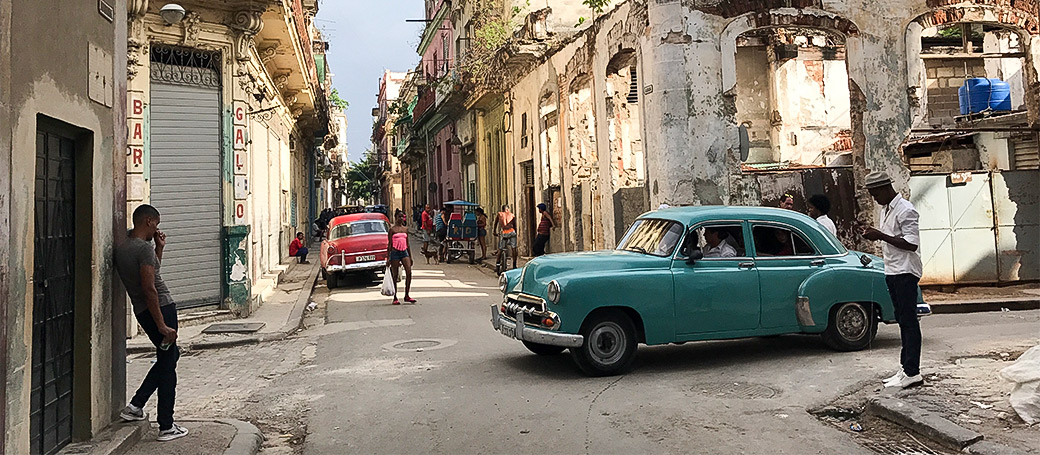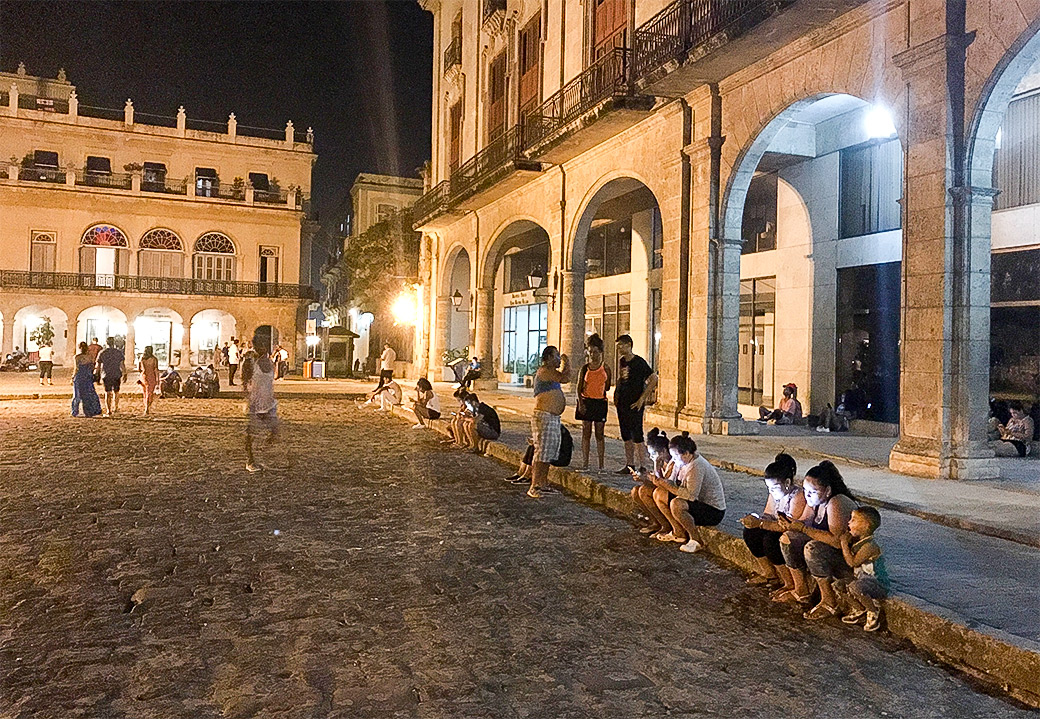
Anyone wanting to know how the world looks without smartphones should make their way quickly to Cuba. Mobile internet is so hard to get, that in the resorts there are even entire pool complexes without smartphones. Something unthinkable in Europe or the USA. And if somewhere a smartphone does appear, then it will be most likely limited to just its camera function.
Internet in Cuba: A Scarce Commodity
The good news though is that there is mobile internet and it works quite well. So you can be the only one by the pool surfing the internet, but just with the same bad conscience as if you were having an endless shower in the desert. Internet in Cuba is a really scarce resource, one which should be used sparingly.
If you want to use mobile internet, you’ll have to take some more radical measures than suggested in my recent blog on international roaming. For Cuba, first you should turn off mobile data usage for all apps and activate it only for those apps that you absolutely need. Also deactivate the loading of images in your e-mail app. I decided to only activate e-mail and WhatsApp. And think about the alternatives – a real paper map instead of Google Maps (Maps does not allow offline maps in Cuba) and TV news instead of your news apps. So fully prepared, you can reduce your data consumption, even with high e-mail volumes, to 5-7 MB a day.
Be Careful with the Power Supply!
But you need to pay attention to more than just the data volume – next up is the power supply. Cuba’s sockets are compatible with US plugs, but voltage is not only 110V, but often 220V. So, if you are using a power adapter from the US, watch out.
One Cable Connects Cuba to the Rest of the World
Cuba is connected to the rest of the world by just a single cable. Unfortunately, this connection doesn’t lead to the USA, but due to political reasons heads straight to Venezuela. A second, purely backup cable leads to Jamaica. You get a first impression of the available bandwidth at the ATM. Once your credit card is inserted, nothing happens for several minutes. Don’t worry though, you don’t need to fear your card being swallowed. You just have to wait a very long time for the ATM to communicate with the rest of the world.

Internet Vouchers
But how exactly does internet access and roaming work in Cuba? When everyone has to share just one line, then the only thing that works is rationing. The internet in Cuba is almost always time limited. Wi-Fi is also available in most hotels, but with the exception of the hotel Nacional, always limited to just one hour. You are provided with a Wi-Fi voucher and can scratch clear the password. Even if the vouchers in each hotel look the same, they are only valid in the respective hotel and not transferable to others. The advantage of vouchers is that the hour provided is a contingent of 60 minutes. So you can get a few minutes’ e-mail access, end the connection and use the voucher again the next day. In addition to the hotels, there are a few places where people with smartphones appear. This is usually a sign that a hotspot is available. All you have to do is to simply take out your smartphone and look around inquisitively, and soon enough someone will come up to you and ask if you need the internet. You will be given a voucher, and these cost between CUC 2 and 5 (One CUC = one USD) for an hour.
Roaming in Cuba with Digicel
If you want to remain reachable, you’ll need real mobile internet and not have to run from one time-limited hotspot to another. In Cuba however, foreigners are not permitted to buy a local SIM card and for those who are too cautious to borrow a Cuban SIM card from a Cuban, the only option that remains is data roaming. This is unfortunately not as easy as in most other countries. Keepgo, the data SIM card which is available for virtually any country, unfortunately doesn’t support Cuba. Since the regular price for data roaming is around $35 per MB, most carriers have decided not to offer roaming at all to their customers visiting Cuba, rather than anger them with high prices. But there is a single exception – Digicel’s pre-paid data roaming card. For $25, you’ll get a SIM card (incl. a nano SIM) with 100 MB of data volume, which can be reloaded online. The coverage of Cubacel, with which Digicel cooperates, is amazingly good. In the main places you have really quite good 3G coverage and e-mails and WhatsApp work perfectly. This card is only available in the USA. So unless you are in the USA, you’ll need to rely on friends there or eBay traders.
Interesting to note is that if the hotel’s Wi-Fi is out of action, then the 3G connection will also be out of action. You can experience at first hand that there is really only one line out of the country. Anyone who has successfully used mobile Internet and roaming in Cuba is well prepared for any other country. You’ll end up asking yourself when you get home is your 3GB data package actually necessary.